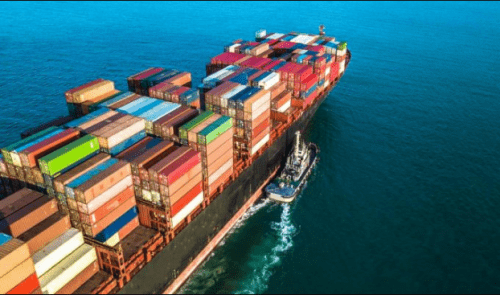The novel coronavirus (COVID-19) pandemic will lead to a contraction in the shipping container fleet and keep prices and lease rates under pressure in 2020, according to analyst Drewry.
With container supply chains around the world disrupted and depressed demand for vessels and boxes, the container shipping market will be under pressure this year, although better than in 2019.
Drewry’s data showed that first quarter newbuild prices and lease rates for all the main categories of containers were up compared to the fourth quarter of 2019 and 2019 as a whole.
“Primarily, this was the result of improving levels of optimism regarding the outlook for world trade. The US and China signed Phase One of a new trade agreement and the Brexit withdrawal deal was concluded,” wrote Martin Dixon, director, head of research products, Drewry.
“From the container manufacturing perspective, it appeared as if efforts by China’s main box builders to secure minimum prices for their equipment was having some success. Lease rates also hardened, rising between 15% and 20% compared with Q4 2019 for dry freight (20ft, 40ft and 40ft high-cube) equipment,” Dixon said.
But these increases masked “intense volatility” in the market during the period, he observed.
At the beginning of this year, the price of a 20ft standard container stood at about $1,750. By end-February the price rose to as much as $2,150, before a sharp drop to approximately $1,900 in late-March.
The severity of COVID-19 and the lockdown in China and subsequently in many parts of the rest of the world was the cause of the price drop, Dixon said.
“Total box output (dry freight and reefer) in Q1 2020 was one of the lowest in a quarterly period; 33% lower than Q4 2019 and 35% below that of the corresponding period of 2019. The dry box sector was the worst affected with a year-on-year decline in production of 40%. This compared with a 4% increase in the output of reefer containers as the shift of cargo from specialised reefer and air freight services to liner services and containers continued,” he said.
The remainder of the year is expected to be challenging with orders dominated by ocean carriers’ and lessors’ needs to replace ageing inventories.
With few companies expected to expand their fleet this year, Drewry expects the ocean-borne fleet of containers to decrease marginally, though it could be worse depending on the recovery in trade volumes.
“This would represent the first reduction since the financial crisis of 2009 when the pool of equipment declined by 4%,” Dixon said.
